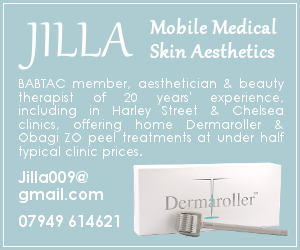Celebrity smile transformations have become a staple of headlines and social media feeds, with many stars opting for veneers to achieve that picture-perfect look. You might be surprised to learn that the psychology behind this trend is as significant as the cosmetic results themselves. The appeal isn’t just about having whiter teeth, it’s about confidence, admiration, and sometimes, keeping up with the demands of fame.
If you’ve ever wondered whether the dazzling smiles you see on your favourite personalities are truly attainable, you’re not alone. These transformations can shift public perceptions and influence what people consider attractive or desirable. Understanding the real motivations and realities behind the veneer trend can help you make more informed choices if you’re thinking about a smile upgrade yourself.
Understanding Veneer Trends in Celebrity Culture
Veneers have become a notable choice for dental makeovers, especially among public figures. Their appearance in the media has strongly influenced your perception of smiles and dental aesthetics.
What Are Veneers?
Veneers are thin shells, often made from porcelain or composite resin, that cover the front surface of your teeth. Dentists use them to mask issues like discolouration, uneven spacing, chips, or minor misalignments.
You’ll find two primary types: porcelain veneers, valued for their durability and natural appearance, and composite veneers, which are less costly but may not last as long.
The treatment process usually involves removing a small layer of enamel so the veneer can bond securely to your tooth. And according to Michael Kelly Dentistry, most people find that veneers can last between 7 and 15 years with proper care.
A table comparing the two common types:
| Type | Material | Longevity | Aesthetics | Cost Range |
| Porcelain | Ceramic | 10–15 years | Natural | Higher |
| Composite | Resin | 5–7 years | Good | Lower |
The Influential Role of Celebrities
Celebrities play a key role in shaping your expectations around dental beauty. High-profile cases, such as those of actors, musicians, and TV hosts, often display dramatic before-and-after photos that generate considerable attention.
Social media amplifies these outcomes, making the transformations more visible and desirable.
You may find yourself comparing your own smile to those seen on screen or in magazines, sparking interest in similar procedures.
Many celebrities openly discuss their dental work during interviews or on their platforms, contributing to a normalised view of cosmetic dentistry. Their personal endorsements have led to increased trust and awareness about veneer options.
Popularity of Smile Transformations
The demand for veneers in the UK has grown significantly, with many people citing celebrity inspiration as their main reason for treatment. Dentists now see a wide range of patients, from young professionals to retirees, wanting to refine their smiles.
A common request is the “Hollywood Smile,” distinguished by symmetrical, bright, and uniform teeth.
Social media filters and high-definition images have raised expectations for flawless appearances, increasing interest in dental enhancements.
Key factors influencing your decision often include visibility of results, relatively quick procedures, and the promise of improved confidence. Some dental practices even offer mock-ups or digital previews, allowing you to visualise the potential change before making a commitment.
The Psychological Impact of Celebrity Smile Transformations
When you see well-known personalities debuting flawless smiles overnight, it’s easy to wonder how these changes might affect your perception of dental aesthetics. The psychology behind celebrity veneers goes deeper than just physical looks, shaping how you think about perfection, self-worth, and modern beauty ideals.
The Desire for Perfection
You might notice that perfectly aligned, ultra-white teeth have become a standard in film, television, and music. This shift often leads people to believe that their own smiles are inadequate by comparison. Veneers promise a shortcut to this ideal, appealing to anyone seeking quick improvements.
Some seek veneers to boost confidence, believing a “perfect” smile ensures social acceptance or even professional advantage. This pressure to measure up can make minor dental imperfections seem like major flaws. It’s important to know that no two smiles are identical, even among celebrities.
Drivers of perfectionism in dental aesthetics:
- Comparison to public figures
- Influence of before-and-after results
- Social feedback from friends or colleagues
Media Influence and Self-Image
Television, magazines, and film often showcase celebrities’ smile makeovers as essential to their success. You see these transformations celebrated in headlines and “exclusive” interviews, positioning veneers as a status symbol. This focus can make it feel like cosmetic dentistry is not just desirable, but almost necessary.
As a result, many people start scrutinising their own smiles more closely. If you often feel self-conscious after seeing such features, it’s likely because the media sets the bar so high. The attention given to perfect teeth can shift your self-image, sometimes fostering dissatisfaction or heightened awareness of perceived flaws.
Being aware of editing, filters, and photo retouching helps put these depictions into perspective. Real smiles vary greatly, yet media rarely highlights this diversity.
Social Media and Aspirational Smiles
Platforms like Instagram and TikTok play a significant role in shaping beauty trends. Celebrity posts and influencer partnerships with dental brands bring veneer treatments into your daily feed. Popular hashtags like #veneers or #smilemakeover make these transformations visible and accessible.
You might feel inspired—or pressured—when you see endless photos of luminous, uniform teeth. The interactive nature of social media also means you are exposed to peer comparisons, real-time feedback, and targeted advertising. This reinforcement can lead to increased interest in cosmetic dentistry among all age groups.
Remember: Not everything you see online reflects typical outcomes or natural variation. Most celebrities have dental professionals, stylists, and post-production teams helping them achieve that “perfect” look.
The Reality Behind Veneer Procedures
Veneer treatments have grown immensely popular among celebrities, but the real process is more involved than many realise. Knowing what to expect, from the procedure itself to realistic outcomes, can help you make more informed choices.
The Veneer Application Process
Getting veneers usually means at least two dental visits. First, your dentist assesses your teeth and discusses your smile goals. X-rays and impressions are taken for a precise fit.
Your natural teeth are then lightly reshaped—usually by removing a small amount of enamel—so the veneers will bond effectively. After reshaping, a mould is sent to a dental lab, where your custom veneers are crafted, often from porcelain.
Once ready, your dentist checks the appearance and fit before bonding them securely using dental cement and a special curing light. The process is permanent, as the enamel removal cannot be reversed.
Benefits and Limitations
Veneers offer a dramatic change in your smile, correcting discolouration, gaps, and minor misalignments. They’re stain-resistant and can last 10–15 years with proper care.
Despite these perks, veneers are not a fix for all dental issues. You’ll need healthy gums and sufficient enamel before the procedure. Veneers can chip or break under excessive force, and if they do, replacement is required as repairs are often impossible.
Table: Veneer Pros and Cons
| Pros | Cons |
| Natural appearance | Irreversible process |
| Quick results | Costly (often £400–£1000/tooth) |
| Stain resistance | Possible sensitivity |
| Custom fit | Not suitable for everyone |
Common Misconceptions
A common myth is that veneers are a simple, pain-free solution for perfect teeth. In reality, the process can involve sensitivity and mild discomfort during preparation.
Some believe veneers can fix any dental issue, but they’re only suitable for certain cosmetic concerns. Misusing them to mask decay or gum disease can make oral health problems worse.
It’s also untrue that veneers last forever. Regular dental check-ups, daily hygiene, and care with hard foods are necessary to keep them looking good and functioning well.
Comparing Natural Smiles and Veneered Smiles
Veneers can change the entire look of your smile, but this transformation isn’t only about aesthetics. The psychological impact of having a veneered versus a natural smile can influence your confidence and how you relate to others.
Aesthetic Differences
A natural smile often features subtle variations in tooth colour, shape, and alignment. These details give character and authenticity to each person’s appearance.
Veneered smiles, by contrast, usually appear more uniform. Porcelain veneers can create highly symmetrical teeth with consistent shading. This polished look can be seen in many celebrities.
| Feature | Natural Smile | Veneered Smile |
| Colour | Slight variations | Even and bright |
| Shape | Some irregularities | Uniform and sculpted |
| Translucency | Natural light reflection | Can be slightly opaque |
It’s worth noting that while veneers are designed to look like real teeth, they may lack some of the small imperfections that make natural smiles unique.
Psychological Effects on Individuals
The change from a natural to a veneered smile can shift the way you feel about yourself. Many people report feeling more confident after getting veneers, especially if they were self-conscious about chipped, damaged, or discoloured teeth.
Positive feedback from others can also reinforce your new sense of self-esteem. However, some people may feel that a dramatic change makes them look less like themselves, which can take time to adjust to.
You might find that your smile becomes a focal point during social interactions. This can feel empowering, but it may also make you more self-aware, especially in the early days after treatment. Regular maintenance is important, as concern about damage can linger in daily routines.
Long-Term Considerations and Ethical Perspectives
Choosing veneers is not just about instant results. It involves long-term care and ethical questions that you need to weigh before committing.
Longevity and Maintenance
Porcelain veneers can last between 10 and 15 years with proper care, while composite veneers often last around 5 to 7 years. You’ll need to maintain excellent oral hygiene, as veneers do not protect your natural teeth from decay or gum disease. Regular dental check-ups, gentle brushing, and non-abrasive toothpaste are essential.
Veneers can chip or crack if you bite into hard foods, so you may need to adjust your eating habits. Some people may require replacements over time, which includes cost and further dental work. Here’s a quick checklist for care:
- Brush twice daily and floss
- Avoid biting hard objects
- Attend regular dental visits
Improper maintenance might shorten the lifespan of your veneers and affect your underlying teeth.
Ethical Questions in Cosmetic Dentistry
The popularity of veneers in celebrity culture often raises ethical concerns regarding informed consent and realistic expectations. Dentists must ensure you understand that veneers are sometimes an irreversible process, as some natural tooth structure is removed.
There are also issues related to promoting dental procedures for purely aesthetic reasons, especially to younger audiences. Pressures to mimic celebrity smiles can lead to unnecessary dental work and potential regret.
You should ask your dentist about alternative treatments and weigh cosmetic desires against medical need. Choosing a reputable practitioner helps avoid unnecessary procedures and prioritises your long-term oral health.








